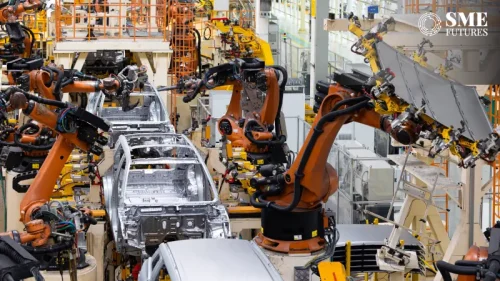With the Union Budget 2020-2021 around the corner, electrical equipment companies have shared the industry expectations and recommendations. The electrical equipment sector, that contributes 8.1 per cent of the manufacturing sector in terms of value and 1.35 per cent of India’s GDP, provides a direct employment to 5 lakh people and indirect employment to 10 lakh people and over 50 lakhs across the entire value chain, according to statistics from the Seconded European Standardization Expert for India (SESEI).
During FY18, the production of electrical equipment industry witnessed a growth of 9.9 per cent to Rs. 1,75,000 crore over the previous year. Also, exports and imports of electrical equipment have been growing steadily with exports reaching Rs. 41,792 crore and imports hitting Rs. 55,603 crore. Recognizing the industry’s high growth potential in coming years, the government had formulated a ‘Vision 2022’, under which it identified five key areas to work upon – industry competitiveness, upgrading technology, skill development, promotion of exports, and conversion of latent demand.
As part of the plan, the government has been pushing for ‘net zero imports’ by 2020 through initiatives such as Make in India, Digital India, Modified Special Incentive Package Scheme (M-SIPS) and Electronic Development Fund (EDF) to promote manufacturing in the country. Although industry experts see improvements made on the innovation side, they still feel there are some of the grey areas in the sector that needs to work upon.
Need anti-dumping duty, innovation centres
Highlighting the challenges faced by the industry, Aniruddh Brahmbhatt from Hitachi Hi-Rel Power Electronics said that the government should come up with measures on import policies.
“From past few months, the industry is underperforming due to various reasons. If the government’s policies are in line and if it could control the import from China, it could be an added advantage for the MSMEs and as well as the all electrical manufacturers.”
Aniruddh Brahmbhatt, Hitachi Hi-Rel Power Electronics
“As part of it push towards ‘Make in India’ initiative, the government should encourage domestic manufacturers by taking steps on anti-dumping duty,” Brahmbhatt added while also talking about the growing use of electrical equipment in renewable sector, and that the government should provide some sort of benefits to people engaged in the industry.
As far as GST is concerned within the electrical segment, some of the products are under 18 per cent and some products come under 28 per cent bracket. He further stated that there should be parity and rates should be brought down to 18 per cent.
Innovation and newer technologies in the field of mobility, power management are the future of India. Thus, the Budget should announce measures to promote innovation in the sector.
“We need innovation centres that will encourage startups to work on newer technologies in the electrical segment,”
Babu TK, CEO, Elmeasure, a Bengaluru-based electrical equipment manufacturer.
What power sector wants
Whether the economy slows down or goes up, it rarely impacts the power industry because the consumption is ever increasing. However, one of the challenges is the “cautious behaviour that the utility sector has adopted due to the present economic slowdown scenario,” said Manish Gupta, regional manager at Omicron, a diagnostic and testing solution provider. “They are bit more cautious in the capital investments in the sector, which directly impacts organizations such as us,” he added.
In another recent development, the upcoming Budget may have a new policy framework to support power distribution companies. Union Power Minister RK Singh has discussed and proposed a new scheme with the finance ministry. The new scheme could likely be included in the Budget. As per the officials, the scheme may come up as a revised version of Ujwal Discom Assurance Yojana (UDAY).
Allocations under the new scheme will be made based on efficiency. According to several media reports, the government aims to reduce the losses of power distribution companies (discoms) to 15 per cent from 18.79 per cent loss in the financial year 2018-19. This is expected to support discoms to cover their payment to the generators and lenders, while also investing in upgrading power infrastructure. The accumulated losses of all discoms have again shot up to over Rs. 80,000 crore, as of now, out of which close to Rs. 60,000 crore is overdue. The new financial support scheme will come with stringent conditions of regular power tariff revision by discoms and bringing down AT&C (aggregate, technical and commercial) losses to a level of 15 per cent within a year











